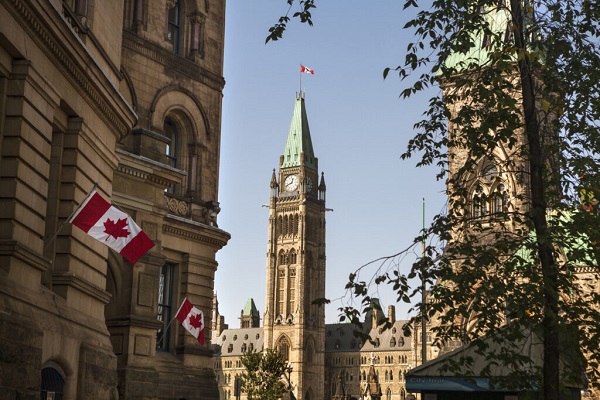David Clinton
Are We Winning the Patient-to-Doctor Ratio War?

The fact that millions of Canadians lack primary healthcare providers is a big deal. The grand promise of universal healthcare rings hollow for families forced to spend six hours waiting in a hospital emergency room for a simple ear infection diagnosis.
Just how big a deal is it? Statistics Canada data from 2021 ranks provinces by their ability to provide primary health providers. As you can see from the chart, New Brunswick and Ontario were doing the best, with doctors for nearly 90 percent of their residents. Quebec, able to find providers for just 78.4 percent of their population, landed at the bottom. But even just 10-15 percent without proper coverage is a serious systemic failure.
Since healthcare is administered by the provinces, it makes sense to assume that provincial policies will influence results. So comparing access to primary care practice results over time might help us understand what’s working and what isn’t.
The Audit is a reader-supported publication.
To receive new posts and support my work, consider becoming a free or paid subscriber.
To that end, I pulled Statistics Canada data tracking total employment in offices of physicians (NAICS code 621111) by province. The data covers all employees (including nurses, office managers, and receptionists) in all non-hospital medical offices providing services that don’t include mental health.
I originally searched unsuccessfully for usable data specific to doctors. But as it turns out, such data would have included surgeons and other hospital-based specialties when I’m really looking for general (family) care providers. So I think what we got will actually act as a better proxy for primary care access.
Do keep in mind that staffing levels in the sector represent just one of many statistical signals we could use to understand the healthcare universe. And it’s just a proxy that’s not necessarily a perfect map to reality.
In any case, I adjusted the numbers by provincial populations so they’d make statistical sense. The chart below contains ratios representing how many residents there are per worker between 2010 and 2023:
You might notice that PEI is missing from that chart. That’s because the reported numbers fell below Statistics Canada’s privacy threshold for most of the covered years.
Alberta, with a ratio of just 282:1 is the current champion, while Newfoundland (438:1) has the worst record. But changes over time are where things get interesting. BC’s performance declined by more than 11 percent. And Quebec improved by more than 40 percent!
As you can see for yourself in that chart, Quebec’s most dramatic growth took place between 2016 and 2019. What was going on around that time? Well, both Bill 10 and Bill 20 were introduced in 2015.
- Bill 10 restructured the healthcare system by reducing the number of administrative regions and centralizing governance to streamline services and improve efficiency.
- Bill 20 established patient quotas for doctors, mandating a minimum number of patients they were required to see. Physicians who did not meet these quotas faced penalties, such as reduced compensation.
I don’t need to speak French to assume that those measures must have inspired an awful lot of anger and push back from within the medical profession. But the results speak for themselves.
Or do they? You see there’s something else about Quebec we can’t ignore: Chaoulli v. Quebec (2005). That’s the Supreme Court of Canada case where the Canada Health Act’s ban on private delivery of healthcare was ruled unconstitutional (for Quebec, at any rate).
As a direct result of that decision, there are now more than 50 procedures that can be performed in private surgical clinics in the province. The number of private clinics nearly doubled between 2014 and 2023.
Predictably, wait times for surgeries fell significantly over that time. But the numbers of non-hospital employees would probably have climbed at the same rate. That could possibly go further to explain Quebec’s steady and consistent improvements in our data.
What about the other provinces? There have been structural changes to delivery policies in recent years, but they’re mostly too new to have produced a measurable impact. But here’s a brief overview of what’s being tried:
- This Toronto Star piece describes efforts in both Ontario and BC involving plans among some smaller municipalities to build and manage family health practices and pay their doctors as employees. The idea is that many doctors will prefer to avoid the headaches of starting and running their own businesses and would prefer instead to work for someone else. The obvious goal is to attract new doctors to underserved communities. It’s still way too soon to know whether they’ll be successful in the desperate race for the shrinking pool of family physicians.
- Both Ontario and Alberta have championed Family Health Groups (FHGs), where physicians receive additional incentives for providing comprehensive care. Ontario’s Family Health Networks (FHN) and Family Health Organizations (FHO) also compensate physicians based on the number and demographics of enrolled patients.
- British Columbia and Nova Scotia have implemented variations of a Longitudinal Family Physician (LFP) Payment Model. LFPs compensate family physicians based on factors like time spent with patients, patient panel size, and the complexity of care. They claim to promote team-based, patient-partnered care.
The Audit is a reader-supported publication.
To receive new posts and support my work, consider becoming a free or paid subscriber.
Invite your friends and earn rewards
COVID-19
Vaccines: Assessing Canada’s COVID Response


 David Clinton
David Clinton
I planned to be “first in line” for the shots as soon as my age cohort became eligible. By early March however, COVID itself dropped by the house, leading to the most uncomfortable (although non life-threatening) week of my life.
It’s been five years since COVID hit and one part of me wants to stuff it all in a closet somewhere and forget about it. But perhaps certain events – and especially government errors and overreach – should be documented. So this post will identify actions at all levels of government from those early days that, given our understanding of the threat available through the benefit hindsight, were both misguided and damaging.
I haven’t completely forgotten the mood through the early months in 2020. Politicians faced near-unanimous public demand for an aggressive response. Much of that sentiment was the result of messaging coming from foreign governments (mostly in the U.S.). But the local sentiment was definitely there.
To be fair, Governments got some things right and, taking into account the chaos and uncertainty of those early months, even some of their mistakes were understandable. But it’s the job of government to lead. And to avoid making choices – even popular choices – that will lead to predictable harms.
Vaccine mandates starting in 2021 were a case in point. Federal authority largely stemmed from the 2005 Quarantine Act and the Contraventions Act that allowed officials to issue tickets for non-compliance with the Quarantine Act. Provincial mandates were based on laws like Ontario’s Emergency Management and Civil Protection Act. The question isn’t whether the mandates and their enforcement were legal, but whether they caused more harm than good.
As the first vaccines started arriving in Canada around February 2021, I planned to be “first in line” for the shots as soon as my age cohort became eligible. By early March however, COVID itself dropped by the house, leading to the most uncomfortable (although non life-threatening) week of my life.
After recovering, my family doctor advised me to wait three months before getting the shots so my body could get back to normal. During those months, I got access to preprint results from the Israeli study into natural immunity which showed that:
Natural immunity confers longer lasting and stronger protection against infection, symptomatic disease and hospitalization caused by the Delta variant of SARS-CoV-2, compared to the BNT162b2 two-dose vaccine-induced immunity
Those results were later confirmed by CDC and NEJM studies, among others.
Given that context, I didn’t see any justification for exposing myself to even minimal health risks associated with vaccines. Which meant that, despite demonstrably posing no threat to public health, I would (at various times) be unable to:
- Board domestic commercial flights, VIA Rail, Rocky Mountaineer trains, and cruise ships within Canada
- Board international flights or trains departing Canada
- Freely return to Canada through an overland point of entry
- Upon return to Canada, bypass the 14 day quarantine under the Quarantine Act
- Upon return to Canada via air, bypass the three day quarantine in (expensive) government-approved hotels
- Engage in ‘non-essential” activities like restaurants, gyms, events (details varied from province to province)
- Enter Parliament
- Seek employment in federally regulated air, rail, and marine sectors
What should Canadian governments have done? Remove restrictions on individuals with natural immunity, obviously. Which, by the way, would have come with the valuable bonus of entirely avoiding the truckers protest and consequent confrontations.
If authorities were reluctant to take us at our word on immunity, they could have followed the European Union’s lead by emulating their Digital COVID Certificate for proof of recovery. Were they worried about people without immunity creating fake certificates? Hard to take that one seriously. There were more fake vaccine passports littering the streets of Ontario than abandoned Toronto Maple Leafs car window flags in a normal early May.
In the end, my own suffering was negligible. I didn’t really want to visit family in the U.S. all that much anyway. But for millions of other Canadians, the real-world stakes were far higher. And all that’s besides the billions of dollars wasted during those years’ government policies.
To be sure, resisting unscientific street-level calls for vaccine mandates would have required courage. But shouldn’t acts of courage be a source of pride for public officials?
Subscribe to The Audit.
For the full experience, upgrade your subscription.
Business
Is Government Inflation Reporting Accurate?


 David Clinton
David Clinton
Who ya gonna believe: official CPI figures or your lyin’ eyes?
Great news! We’ve brought inflation back under control and stuff is now only costing you 2.4 percent more than it did last year!
That’s more or less the message we’ve been hearing from governments over the past couple of years. And in fact, the official Statistics Canada consumer price index (CPI) numbers do show us that the “all-items” index in 2024 was only 2.4 percent higher than in 2023. Fantastic.
So why doesn’t it feel fantastic?
Well statistics are funny that way. When you’ve got lots of numbers, there are all kinds of ways to dress ‘em up before presenting them as an index (or chart). And there really is no one combination of adjustments and corrections that’s definitively “right”. So I’m sure Statistics Canada isn’t trying to misrepresent things.
But I’m also curious to test whether the CPI is truly representative of Canadians’ real financial experiences. My first attempt to create my own alternative “consumer price index”, involved Statistics Canada’s “Detailed household final consumption expenditure”. That table contains actual dollar figures for nation-wide spending on a wide range of consumer items. To represent the costs Canadian’s face when shopping for basics, I selected these nine categories:
- Food and non-alcoholic beverages
- Clothing and footwear
- Housing, water, electricity, gas and other fuels
- Major household appliances
- Pharmaceutical products and other medical products (except cannabis)
- Transport
- Communications
- University education
- Property insurance
I then took the fourth quarter (Q4) numbers for each of those categories for all the years between 2013 and 2024 and divided them by the total population of the country for each year. That gave me an accurate picture of per capita spending on core cost-of-living items.
Overall, living and breathing through Q4 2013 would have cost the average Canadian $4,356.38 (or $17,425.52 for a full year). Spending for those same categories in Q4 2024, however, cost us $6,266.48 – a 43.85 percent increase.
By contrast, the official CPI over those years rose only 31.03 percent. That’s quite the difference. Here’s how the year-over-year changes in CPI inflation vs actual spending inflation compare:
As you can see, with the exception of 2020 (when COVID left us with nothing to buy), the official inflation number was consistently and significantly lower than actual spending. And, in the case of 2021, it was more than double.
Since 2023, the items with the largest price growth were university education (57.46 percent), major household appliances (52.67 percent), and housing, water, electricity, gas, and other fuels (50.79).
Having said all that, you could justifiably argue that the true cost of living hasn’t really gone up that much, but that at least part of the increase in spending is due to a growing taste for luxury items and high volume consumption. I can’t put a precise number on that influence, but I suspect it’s not trivial.
Since data on spending doesn’t seem to be the best measure of inflation, perhaps I could build my own basket of costs and compare those numbers to the official CPI. To do that, I collected average monthly costs for gasoline, home rentals, a selection of 14 core grocery items, and taxes paid by the average Canadian homeowner.¹ I calculated the tax burden (federal, provincial, property, and consumption) using the average of the estimates of two AI models.
How did the inflation represented by my custom basket compare with the official CPI? Well between 2017 and 2024, the Statistics Canada’s CPI grew by 23.39 percent. Over that same time, the monthly cost of my basket grew from $4,514.74 to $5,665.18; a difference of 25.48 percent. That’s not nearly as dramatic a difference as we saw when we measured spending, but it’s not negligible either.
The very fact that the government makes all this data freely available to us is evidence that they’re not out to hide the truth. But it can’t hurt to keep an active and independent eye on them, too.
Subscribe to The Audit.
For the full experience, upgrade your subscription.
-

 National2 days ago
National2 days agoCarney promotes MP instrumental in freezing Freedom Convoy donors’ bank accounts
-

 Business2 days ago
Business2 days agoThe carbon tax’s last stand – and what comes after
-

 conflict1 day ago
conflict1 day agoIran nuclear talks were ‘coordinated deception’ between US and Israel: report
-

 illegal immigration2 days ago
illegal immigration2 days agoLA protests continue as judge pulls back CA National Guard ahead of ‘No Kings Day’
-

 conflict2 days ago
conflict2 days agoIsrael strikes Iran, targeting nuclear sites; U.S. not involved in attack
-

 International1 day ago
International1 day agoIsrael’s Decapitation Strike on Iran Reverberates Across Global Flashpoints
-

 Energy1 day ago
Energy1 day agoCanada is no energy superpower
-

 Alberta1 day ago
Alberta1 day agoPunishing Alberta Oil Production: The Divisive Effect of Policies For Carney’s “Decarbonized Oil”

 By
By 





